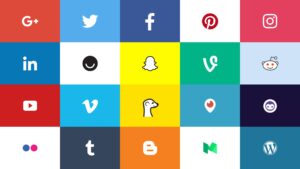Why do search engines always rank certain websites so highly? Obviously, their content is kingly, but so is their search engine optimization (SEO). Indeed, for many sites, the search-engine spiders that crawl the Web deliver a third or more of their traffic. Perhaps the most famous example comes from the Huffington Post, which in February reeled in readers with the ingenious bait: “What Time Is the Super Bowl?”
In protest, writers for publications such as the Washington Post, New York Times, and Atlantic each have taken turns slugging the SEO punching bag. The headlines describe their complaint: “Gene Weingarten Column Mentions Lady Gaga.” “This Boring Headline Is Written for Google.” “Google Doesn’t Laugh: Saving Witty Headlines in the Age of SEO.”
In other words, algorithms don’t appreciate wit, irony, humor, or style. As reporter Steve Lohr put it, they’re “numbingly literal-minded.” Alas, Oscar Wilde!
These laments ring true in a big way: it is one of the definitive 21st century truisms that in addition to writing for eternity, or for one’s mother, today’s writer must also write for Google. Yet, as always, the devil’s in the metadata. The secret of stellar SEO is that you can have your cake and eat it, too; that is, you can pen pun-based headlines all day long and maintain your journalistic integrity. You just need to draft a second headline that’s straightforward and keywordy.
The difference is between an article title, which is what you show your readers, and a page title, which is what you show search engines. In technical terms, it is the H1 tag vs. the title tag. (With a good plug-in, like Page Title for Drupal or WordPress SEO for WordPress, you can rig most content management systems to separate the two.)
Consider a few examples from leading news organizations. As they do with most things in life, the media have adopted tactics that range from the bad to the good to the best.
Bad
The way not to write headlines is to use the same one for both the article and the page:
Time
Article Title: Beach Force One
Page Title: Beach Force One
The Atlantic
Article Title: Hacked!
Page Title: Hacked!
Vanity Fair
Article Title: The Woman Who Knew Too Much
Page Title: The Woman Who Knew Too Much
In these examples, keywords pertaining to the article’s subject are MIA. Google doesn’t know if the Time article involves a beach called “Force One” or presidential vacations. Likewise, does “Hacked” mean a hacked Gmail password or the Stuxnet virus? And it’s unclear if “The Woman Who Knew Too Much” refers to Alice Stewart, who wrote a landmark biography by that name, or the former chairwoman of the congressional oversight panel monitoring the Troubled Assets Relief Program.
Good
A better approach employs a single title that blends creativity with SEO punch. The idea is to craft headlines that are both self-explanatory and catchy:
Mashable
Article Title: 15 Case Studies to Get Your Client on Board With Social Media
Page Title: 15 Case Studies to Get Your Client on Board With Social Media
Bloomberg Businessweek
Article Title: Scott Forstall, the Sorcerer’s Apprentice at Apple
Page Title: Scott Forstall, the Sorcerer’s Apprentice at Apple
Gawker
Article Title: What Everyone Is Too Polite to Say About Steve Jobs
Page Title: What Everyone Is Too Polite to Say About Steve Jobs
The compromise position here allows both creativity (integrity) and technology (impact). It kills two birds with one keystroke.
Better
But does compromise allow for enough creativity?
For those who consider themselves what E.B. White called a “word man”—someone who “attaches the very highest importance to words”—these half-measures leave us feeling unfulfilled. For a word man, creativity is a calling. It is sacred and non-negotiable, even if you’re writing for a tabloid or posting to Aunt Becky’s blog.
Headline writing crystallizes the writer’s dilemma. To a writer, a headline is a one-shot first impression, an opportunity to snag a reader’s eye with a cultural allusion, an intriguing alliteration—in short, wordplay that stops a mouse-moving, page-scrolling, attention-deprived user in his pixels and makes him wonder, “What is this?”
Here’s how the SEO-savvy sites solve this quandary:
The New Yorker
Article Title: Changing Times
Page Title: Jill Abramson, New York Times’s First Woman Executive Editor
The Wall Street Journal
Article Title: White House Party Crashers Cause a Hangover
Page Title: Obama Asks for Review After Michaele and Tareq Salahi Crash White House State Dinner
Slate
Article Title: Deliverance
Page Title: U.S. Postal Service: Will It Survive?
True, the two-title technique means extra work. But absent sheer dumb luck, only extra work can deliver the eyeballs your content deserves. And considering the dramatic difference between the number of clicks generated by the first result Google returns vs. the second, the third, and the fourth, you owe it to yourself to play every angle in this ever-changing race to the top.
Best
For those looking to wring every drop of SEO juice out of every article, there’s a fourth arrow in your quiver: the “meta description.” It is from here that Google often pulls the two-line “snippet” displayed for each webpage.
Here’s how the world beaters leverage this space:
New York Magazine
Article Title: What’s Eating the NYPD?
Page Title: Why the NYPD Is Turning on Ray Kelly
Meta Description: Ray Kelly has built the best police force in the country. Now it is turning on him.
Newsweek
Article Title: Citizen Cain
Page Title: Herman Cain’s Unlikely Republican Rise
Meta Description: Meet the rising GOP star who is confounding the pundits and much of black America.
The New York Times Magazine
Article Title: When Is a Flip Not a Flop?
Page Title: The Fate of the Republicans Who Supported Gay Marriage
Meta Description: The four Republicans who broke with their party on New York’s gay-marriage law were supposedly marked for electoral death. But that’s not exactly how it is working out.
Why bother with a meta description? Simple: according to the SEO uber-site, SEOmoz.org, a description induces more clicks.
At the same time, SEOmoz offers a caveat: while a description makes sense for an article that targets a few heavily searched terms, if you’re going after long-tail traffic, “it can sometimes be wiser” to forgo the description and let Google work its will. (If a description is missing, Google will create one, scraping the article for pertinent content.)
Yet SEOmoz’s qualifications aren’t written in stone. “In some cases,” search engines will “overrule the meta description” altogether,” they advise. But here too, “it’s not always wise” to bank on that possibility.
Got all that? Did they just caveat the caveat?
Yes.
SEO is an ever-evolving and much-debated field. It’s full of qualifications and judgment calls, backed by correlation studies and launched by conjecture. Those convoluted meta descriptions notwithstanding, start with the above best practices and you’ll be on Google firma. With this foundation, you’ll be able to pull off one of the web’s hardest acts: you’ll be able to make Google laugh.
Enjoy this post? There’s more where this came from on Google+ and Twitter, where I continue the campaign to make Google laugh.
A version of this blog post appeared on Mashable on May 8, 2012.



